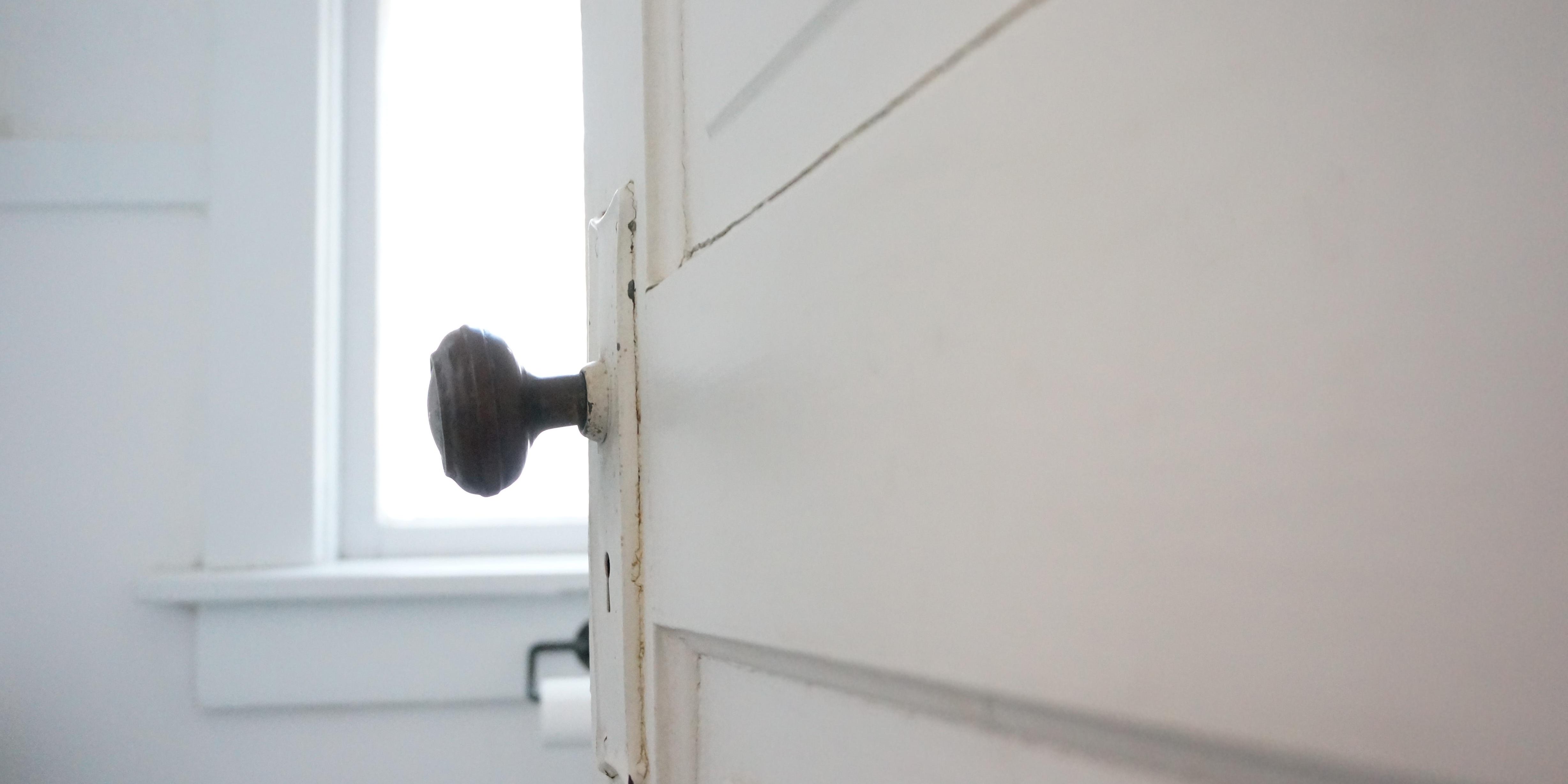If your doors are jamming, rattling or scraping against the floor or jamb, it is important to get to the root of the issue. Common door problems can, if left unchecked, lead to major repair or replacement costs. By troubleshooting door problems early, the cost of repairs is significantly less; in fact, in most cases, you won’t have to pay a dollar to resolve the problem. Armed with the right tools and knowledge, you can make basic repairs and save yourself the cost of a new door or frame.
Door Functionality
In order for a door to function properly, the gap between the door and frame must be uniform around the entire edge of the door. The hinges on your door should move freely, without any obstruction. When the door closes, the latch should click smoothly into the strike plate. If, when you’re troubleshooting door problems, you notice deep scrapes on the strike plate where the plate meets the latch, it can indicate that there is not enough space or the latch is stiff. Depending on the type of door, there will either be two or three hinges. Heavier doors, such as external or fire doors, must have three hinges. If they don’t, the weight of the door will put too much strain on the hinges and eventually lead to problems with the door’s functionality.
Resolving Framing Problems
There are two sections of a door frame, one on the hinge side and the other on the latch side, which are known as door stops. The purpose of these sections is to allow the door to close comfortably. A loose stop will cause rattling when you close the door, whereas the door will jam if the stop is too tight. If you are experiencing any of these issues with your doors, adjusting the offending door stop will likely resolve the problem. If the door hinges squeak when opening or closing the door, there may be rust in the hinge or it simply isn’t sufficiently lubricated. A penetrating lubricant will resolve most issues, by getting deep into the moving parts of the hinge and loosening them up. For more long term protection, a lubricant such as silicone will keep your hinges moving smoothly.
Problems with Handles and Locks
When door handles jam or a key refuses to turn in the lock, most people will resolve the issue by using a lubricant such as WD-40. However, this type of lubricant will only resolve the issue for a short time. Furthermore, WD-40 will eventually cause the pin tumblers in the lock to become sticky, making the problem much worse. What you actually need is a cleaner, which is designed to work on moving parts. “Gum Out” is a good example of a cleaner which works well on door handles and locks. It will clean out any gunk that has gathered in the moving parts of the locking mechanism, allowing handles and keys to turn smoothly and effectively.
Identifying Serious Issues
Sometimes when troubleshooting door problems one may find it is actually caused by the surrounding structures and supports. If you notice cracks in your walls, sagging ceilings, signs of rot, or termite boreholes, you will need to have an inspection carried out to identify the source of the problem. All of these issues pose a serious threat to the structural integrity of your home. Cracks in your walls are usually an indication that there is a problem with the property’s foundations, for instance. A sagging ceiling will not only lead to costly repairs, but could cause serious injury if the ceiling collapses. Termites will literally destroy the timber structures in your home, if left unchecked. So, unless you want to spend thousands of dollars on rebuilding your home, make sure you get a building inspector in if you suspect there is a more serious reason causing the issues with your doors.







